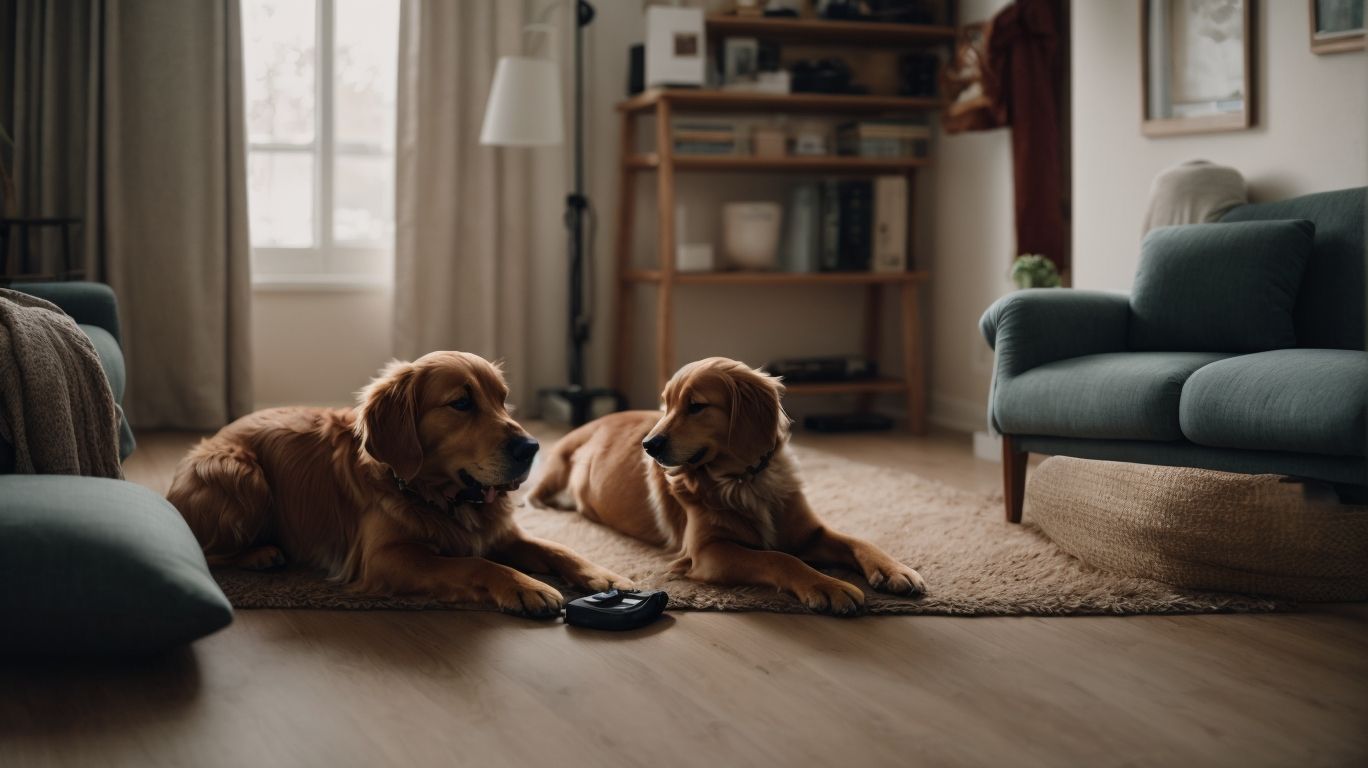
The Ultimate Guide to Training Your Dog with a Clicker
In this ultimate guide, we will explore the fascinating world of clicker training for dogs. From understanding the basics of clicker training to learning about its benefits, required supplies, and effective training techniques, this comprehensive article will equip you with all the knowledge and tools needed to train your furry companion.
Whether you’re a seasoned dog owner or a novice in the realm of dog training, this guide will provide valuable insights and practical tips to help you harness the power of clicker training. So, if you’re ready to unlock the potential of positive reinforcement and strengthen the bond with your canine friend, let’s delve into the world of clicker training together.
What Is Clicker Training?
Clicker training is a positive reinforcement-based training method that uses a clicker to mark desired behaviors in dogs, facilitating effective communication and creating a strong bond between the trainer and the dog.
This method focuses on rewarding the dog for exhibiting good behavior, which encourages them to repeat those actions in the future. Through this system of operant conditioning, dogs learn to associate the sound of the clicker with a reward, reinforcing the desired behavior. This approach not only enhances obedience but also builds trust and understanding between the dog and the trainer.
By strengthening the communication and bond between them, clicker training fosters a harmonious and cooperative relationship, making the learning process enjoyable for both parties.
How Does Clicker Training Work?
Clicker training works by associating the sound of the clicker with positive reinforcement, allowing for precise timing and consistent communication to effectively shape the dog’s behavior and promote obedience.
This form of training focuses on the principles of positive reinforcement, where desired behaviors are rewarded, encouraging the dog to repeat them. Clear, effective communication is key, as the clicker provides an exact marker for the correct action, helping the dog understand what behavior is being rewarded. Timing and consistency play crucial roles.
Timely clicks and immediate rewards create strong associations, while consistency in rewarding the same behavior helps solidify the desired actions.
What Are the Benefits of Clicker Training?
Clicker training brings numerous benefits to dog training, including positive behavior reinforcement, increased engagement, and the opportunity for consistent practice, leading to positive results and a successful training experience.
Positive Reinforcement
Positive reinforcement is a key aspect of clicker training, promoting desirable behaviors and fostering a positive association with obedience and commands, leading to steady training progress and positive results.
It encourages dogs to engage in actions that are beneficial, as they quickly learn to associate the sound of the clicker with a desirable behavior. By consistently rewarding these behaviors, the dog develops a strong understanding of what is expected, making obedience training more effective. This positive approach creates a harmonious bond between the trainer and the dog, establishing clear communication and mutual respect.
It also reduces the likelihood of negative behaviors and strengthens the dog’s confidence and willingness to learn.”
Clear Communication
Clicker training facilitates clear communication with the dog, establishing a strong bond and association between the clicker sound, timing, consistency, and effective engagement, thereby supporting the practice of proper training etiquette and techniques.
This type of training method proves beneficial in building trust and understanding between the trainer and the dog. The precise timing of the clicker sound reinforces desired behaviors, allowing the dog to grasp the concept more effectively.
Consistency in using the clicker enhances the dog’s ability to associate the sound with positive outcomes, creating a harmonious environment for learning and development. The support provided by the clicker helps in refining and perfecting training techniques, resulting in an overall enhanced training experience.
Builds Trust and Bond
Clicker training fosters trust and a strong bond between the dog and the trainer through consistent association, patience, and focus, leading to a positive training experience and successful relationship building.
It allows the dog to understand that their actions result in positive outcomes, reinforcing their confidence and eagerness to learn. This method also encourages clear communication, as the clicker serves as a precise marker of desired behaviors.
The use of rewards during clicker training enhances the dog’s motivation, making the training process enjoyable while deepening the bond between the trainer and the pet.
Makes Training Fun
Clicker training injects fun into the training sessions, promoting positive behavior, increased engagement, and consistent practice, leading to steady training progress and positive results, ensuring a successful and enjoyable training experience.
It encourages a bond of trust between the trainer and the trainee, creating an interactive and rewarding environment. The clear sound of the clicker serves as immediate feedback, helping the trainee associate the behavior with positive consequences. This method is beneficial for all kinds of animals, fostering a strong connection and building confidence.
Clicker training helps to make learning enjoyable and effortless, making it an effective tool for pet owners, professional trainers, and anyone wanting to strengthen the human-animal bond through positive reinforcement.
What Supplies Do You Need for Clicker Training?
To engage in clicker training, you will require specific supplies such as:
- a clicker
- treats
- a leash and collar
- a designated training mat or area
- essential training tools like a treat pouch
The clicker serves as a signal to communicate desired behavior to your pet, while treats function as positive reinforcement. The leash and collar ensure safety and control during training sessions, and a designated area provides a consistent environment for learning.
A treat pouch enables easy access to rewards for timely reinforcement of desired actions, contributing to the effectiveness of the training process.
Clicker
The clicker is a fundamental tool in clicker training, serving as the marker signal to communicate desired behaviors, integral to the clicker training method and the development of a consistent training plan, requiring proper handling and understanding of the clicker sound.
When using the clicker, it plays a crucial role as it enables trainers to precisely mark the exact moment a behavior occurs, making it a powerful tool for positive reinforcement. Its integration within the clicker training method allows for clear and consistent communication with the animal, promoting accelerated learning and effective behavior modification.
Understanding the clicker sound is essential, as the timing and clarity of the click help reinforce the desired behavior, making it a cornerstone of successful clicker training.
Treats
Treats are essential for reinforcing positive behavior, supporting learning, behavior modification, and conditioning in clicker training, necessitating a proper treat pouch and incorporation within the training plan to consistently reward good behavior and teach new behaviors.
By using treats as a positive reinforcement, the dog associates the sound of the clicker with the receipt of a tasty treat, creating a strong motivation to repeat the desired behavior. This method encourages the development of a deep bond and trust between the trainer and the dog, making the training process enjoyable and effective.
Treats can be tailored to suit individual dogs’ preferences, ensuring maximum motivation and engagement during training sessions.
Leash and Collar
The leash and collar contribute to the training structure, focusing the dog’s attention and shaping behavior, serving as essential training tools within the training plan to consistently reward good behavior and establish a structured training environment.
They play a crucial role in communicating with the dog, providing physical guidance, and creating clear boundaries. When used in conjunction with a clicker, the leash and collar help in shaping specific behaviors by creating associations between the desired action and the clicker sound. This combination enhances the training process by reinforcing desired behaviors and redirecting attention when needed.
The leash and collar also aid in maintaining consistent communication and control during training sessions, allowing for effective reinforcement of commands and desired behaviors.
Training Mat or Area
A designated training mat or area provides a consistent and focused training environment, essential for practice, ensuring consistency in training progress, and supporting the incorporation of proper training etiquette and tips.
This dedicated space allows for a clear separation between training sessions and everyday activities, helping the learner understand when the training is in progress. The mat or area serves as a visual cue, signaling to the learner that it’s time to focus and engage in the clicker training. It also aids in reducing distractions, enabling the trainer to convey commands with clarity and precision, leading to improved learning and retention. The training mat or area serves as a valuable tool in creating a conducive learning atmosphere for effective clicker training.
How to Train Your Dog with a Clicker?
Training your dog with a clicker involves key steps such as:
- Charging the clicker, which refers to associating the sound of the clicker with positive reinforcement. This step is crucial as it sets the foundation for the training process.
- Teaching basic commands using the clicker helps the dog understand specific actions linked with the clicker sound.
- Reinforcing good behavior with the clicker further strengthens the desired actions.
- Consistently practicing and maintaining the training regimen ensures that the dog’s responses to the clicker remain consistent and reliable.
By understanding and implementing these key steps, you can effectively train your dog using a clicker.
Charge the Clicker
Charging the clicker is the initial step in clicker training, involving the association of the clicker sound with positive reinforcement, requiring precise timing, consistency, and active engagement to avoid common training mistakes and foster steady training progress.
This crucial process sets the foundation for effective communication between the trainer and the animal, creating a clear and distinct signal for desired behaviors. By consistently pairing the click with a treat or reward, the clicker becomes a powerful tool for shaping behavior.
It’s vital to ensure that the clicker is charged in a quiet environment to eliminate distractions and maintain the focus of the animal, enhancing the effectiveness of the training sessions.
Teach Basic Commands
Teaching basic commands with a clicker focuses on promoting obedience and commands through positive association, bonding, and reinforcing positive behavior, contributing to steady training progress and the effective utilization of training techniques and rewards.
This method allows the trainer to establish a strong communication channel with their pet, enhancing understanding and trust. By using the clicker to mark desired behaviors, the pet learns to associate the sound with a positive outcome, creating a clear link between action and reward. This positive association helps to deepen the bond between the pet and the trainer, creating a strong foundation for further training.
Consistent reinforcement of positive behaviors solidifies the learning process, leading to improved responsiveness and reliable obedience.
Reinforce Good Behavior
Reinforcing good behavior with the clicker involves consistent positive reinforcement, behavior modification, and conditioning, reliant on precise timing, consistency, and leading to successful training outcomes.
It is essential to understand the principles of positive reinforcement, where desired behaviors are rewarded, encouraging their repetition. The clicker serves as a powerful tool in this process, as it marks the exact moment the desired behavior occurs, helping the dog associate the action with the reward. By consistently using the clicker and offering a treat immediately after the click, the dog learns to connect the click sound with positive consequences, leading to effective behavior modification and conditioning.
Practice and Maintain Training
Regular practice and maintenance of training sessions with a clicker reinforce consistency, patience, and focus, contributing to positive behavior, steady training progress, and the effective utilization of reinforcement schedules and proper training tools within the training plan.
Consistency in clicker training helps the animal understand and learn the desired behavior, making it an essential element for successful training outcomes. Patience plays a crucial role in allowing the animal to process and respond to the clicker signals, fostering a comfortable and receptive learning environment.
With continued focus and regular sessions, both trainer and animal can build a strong bond and achieve desired training objectives with ease.
Common Mistakes to Avoid in Clicker Training
In clicker training, it’s crucial to be aware of common mistakes to avoid, requiring an understanding of effective clicker training techniques and the proactive pursuit of solutions to ensure steady training progress.
One common mistake in clicker training is inconsistency in the timing of the click. This can confuse the animal and lead to ineffective training. Another mistake is using the clicker as a bribe rather than a marker for desired behaviors, which can hinder progress.
Overlooking the need for proper rewards or using inappropriate ones can impede the training process. Addressing these mistakes involves learning how to time the click accurately, understanding the purpose of the clicker, and using suitable and motivating rewards to reinforce positive behaviors.
How Long Does It Take to Train a Dog with a Clicker?
The duration to train a dog with a clicker varies based on multiple factors; however, it requires a focus on training progress, leveraging available support and resources, setting realistic training goals, avoiding common mistakes, and ensuring consistency, motivation, and confidence throughout the training process.
These influences play a significant role in shaping the pace at which a dog learns through clicker training. The dog’s responsiveness to the training, the availability of suitable training aids, the handler’s commitment to setting clear objectives, and the ability to maintain a positive and encouraging training atmosphere all contribute to the duration of clicker training.
The dog’s intrinsic motivation and the handler’s confidence in the process can significantly impact the speed and effectiveness of the training.




No Comments